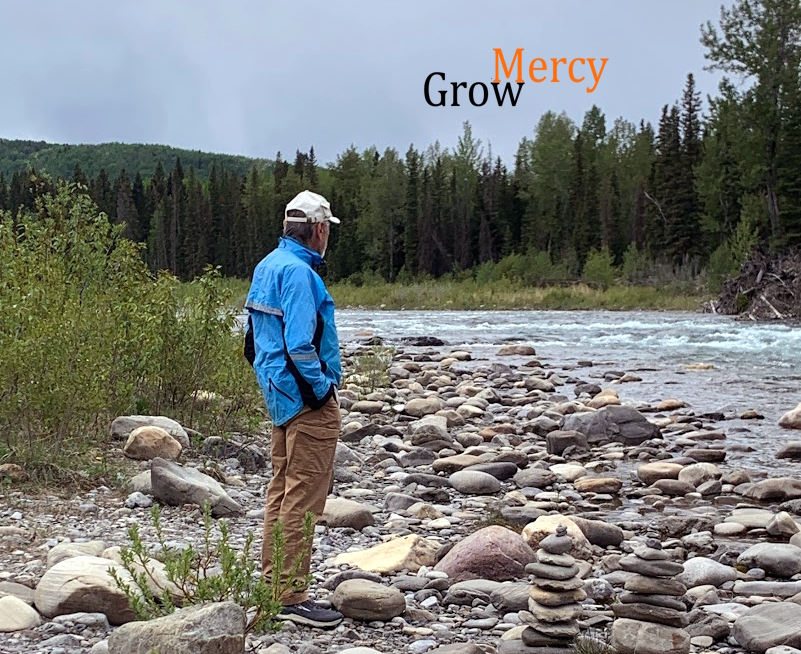The first thing I saw upon entering the Temple of the Emerald Buddha (Wat Phra Kaeo), was the seated hermit.
He’s a comic figure–apparently not taking himself too seriously in a place that weighs heavy with formality, tradition, and gilt. But, I’m given to understand that he’s a good doctor, for which he is venerated. People bring him medicine, which he blesses, improving its therapeutic effect. He’s a happy hermit, and no doubt his good natured outlook goes far in conditioning all potions.
Except for the flow of tourists, the air within the rest of the temple compound is sonorous. This is, after all, the most sacred structure in Thailand. But it’s also said to be the repository of the spirit of the Thai people enmasse.
With this consideration, I walked slowly, trying to pick up the reverberations of that spirit. But it didn’t happen. For one thing, a camera is a distraction. One cannot, not, take pictures, but a camera keeps you at the surface. The other thing that cropped up was this incongruity: If the spirit of the Thai people lived here, it had to be underneath the near ostentatiousness, the almost garish-Disney quality of the temple. The Thai people I had met were warm, hospitable and gracious. The Temple, was overbearing. I decided I was missing something.
I wandered. I took a hundred pictures: the brilliant tiles, the gilt-bronze emblems, the marble monuments, the countless mother of pearl inlays, the stone guards, the half-deer people, the demon-monkey guardians-hardly frightening, and the rest of the pagoda’s and stupa’s and dagobas’.
At last I entered the ubosoth (chapel) of the Emerald Buddha. Here, as prescribed, I took off my sandals and refrained from taking pictures. (There is however a spot in the portico where you can zoom-in on the Emerald Buddha. He’s wearing his rainy season costume.)
The Emerald Buddha is not emerald but jade. It was a mistaken fifteenth century monk that made the claim, but the name stuck. The Emerald Buddha is seated in a glass case, high above a gilded wooden throne. Beneath and around him is a pyramid-like arrangement of images, golden Buddha icons, crowned gilded Buddha figures and more. On the wall behind the throne, I learned, is a mural of the Traiphum–the three worlds of Desire, Form and Non-Form.
(As an act of preparation before entering the ubosoth, people buy tulips, dip them in water and sprinkle themselves.)
The smooth marble floor in front of the Emerald Buddha shrine was crowded with curio-seekers, wonderers and worshippers. Everyone was seated, and presenting, I suppose, many variations of the Lotus position.
![P1060824 [520x390]](https://growmercy.org/wp-content/uploads/p1060824-520x390-thumb.jpg) (A bhikkhu, or fully ordained Buddhist monk, honouring the story of Buddha’s enlightenment, depicted by the mural.)
(A bhikkhu, or fully ordained Buddhist monk, honouring the story of Buddha’s enlightenment, depicted by the mural.)
In spite of all the coming and going, there was silence within the ubosoth. All I heard was the hum of fans. And in spite of the opulent surroundings, there was, within, a basic dignity and reverence.
![P1060812 [520x390]](https://growmercy.org/wp-content/uploads/p1060812-520x390-thumb.jpg) (Found: Out of view, through a gate, behind the galleries, East of the Temple.)
(Found: Out of view, through a gate, behind the galleries, East of the Temple.)
It was possible, in that quiet, to catch something of the Thai spirit that is contained in the Buddhist understanding of samadhi, tranquility of heart.

![P1060762 [520x390]](https://growmercy.org/wp-content/uploads/p1060762-520x390-thumb.jpg)
![P1060767 [520x390]](https://growmercy.org/wp-content/uploads/p1060767-520x390-thumb.jpg)
![P1060768 [520x390]](https://growmercy.org/wp-content/uploads/p1060768-520x390-thumb.jpg)
![P1060776 [520x390]](https://growmercy.org/wp-content/uploads/p1060776-520x390-thumb.jpg)
![P1060779 [520x390]](https://growmercy.org/wp-content/uploads/p1060779-520x390-thumb.jpg)
![P1060782 [520x390]](https://growmercy.org/wp-content/uploads/p1060782-520x390-thumb.jpg)
![P1060778 [520x390]](https://growmercy.org/wp-content/uploads/p1060778-520x390-thumb.jpg)
![P1060805 [520x390]](https://growmercy.org/wp-content/uploads/p1060805-520x390-thumb.jpg)
![P1060800 [520x390]](https://growmercy.org/wp-content/uploads/p1060800-520x390-thumb.jpg)
![P1060794 [520x390]](https://growmercy.org/wp-content/uploads/p1060794-520x390-thumb.jpg)